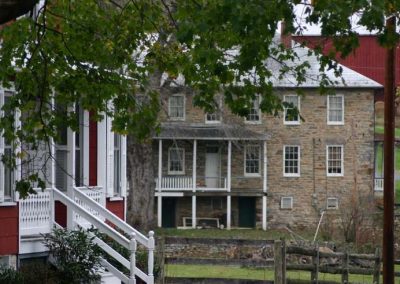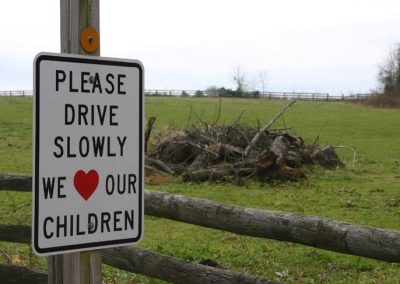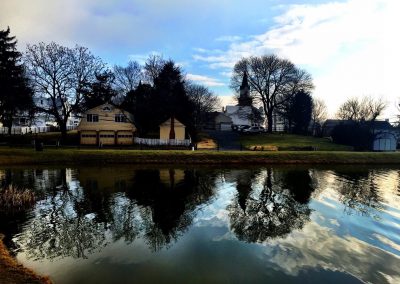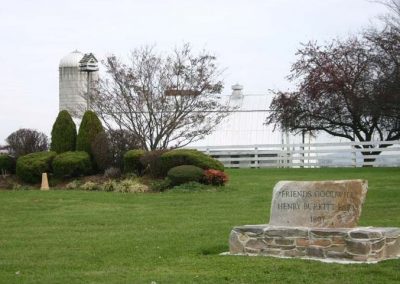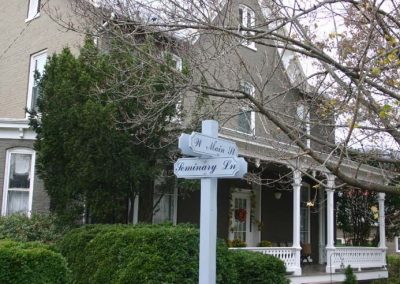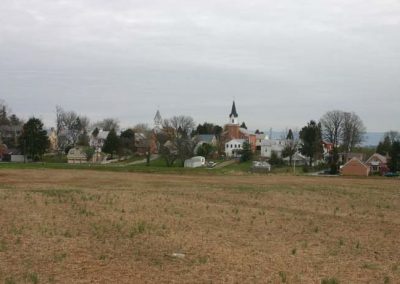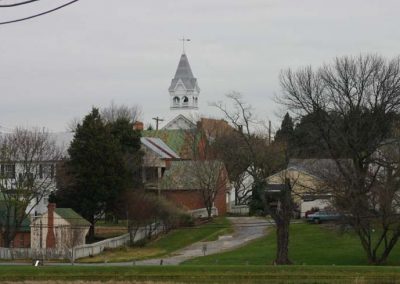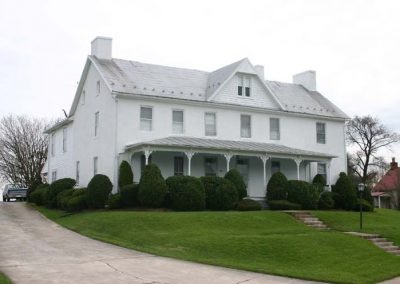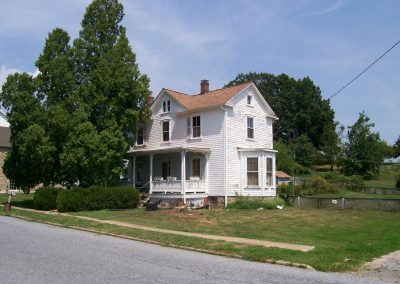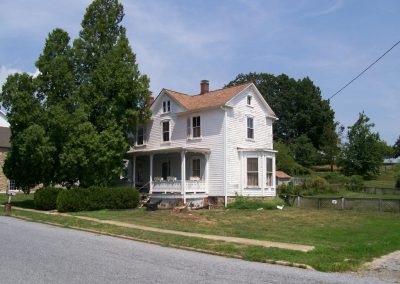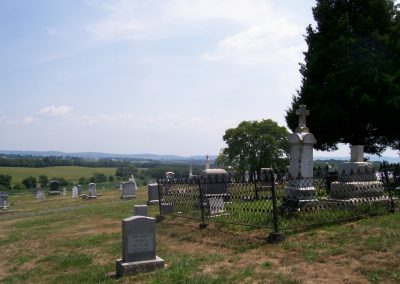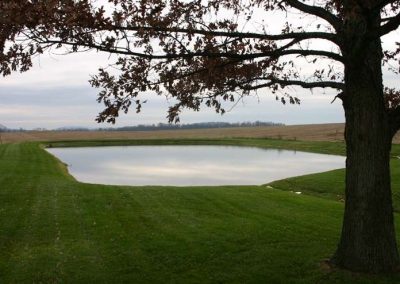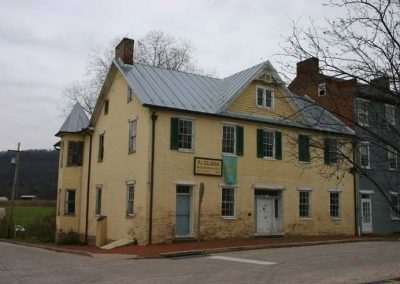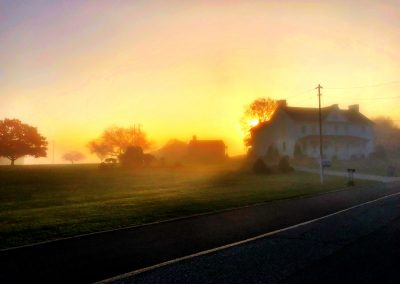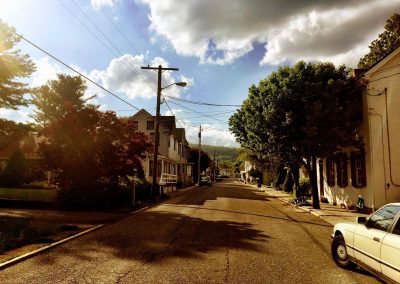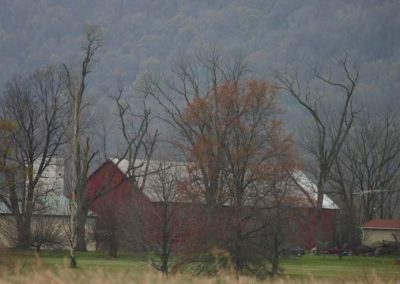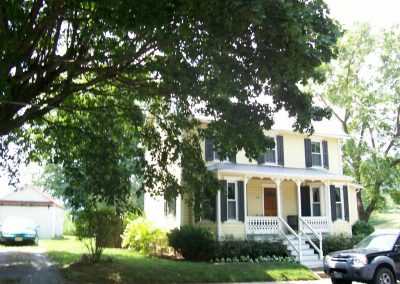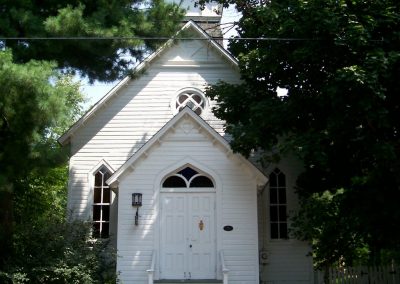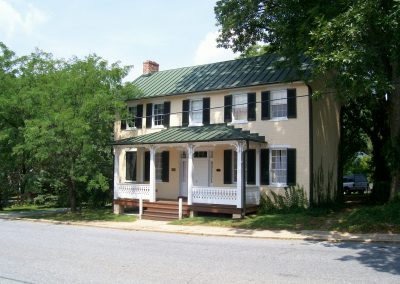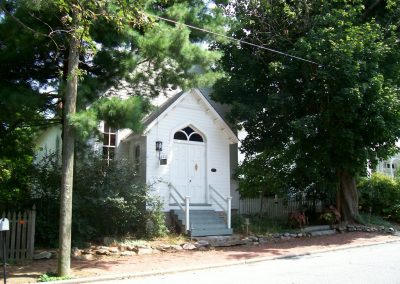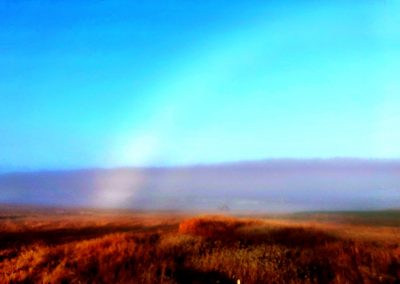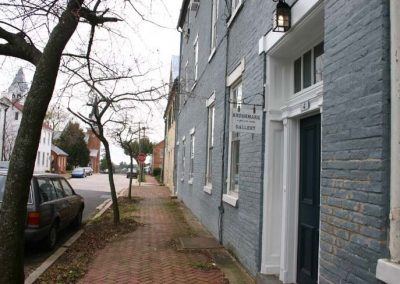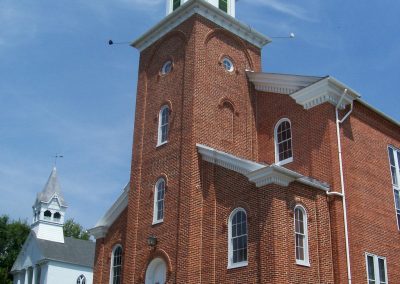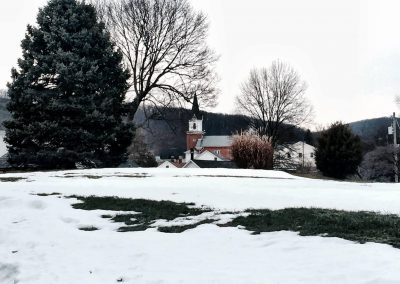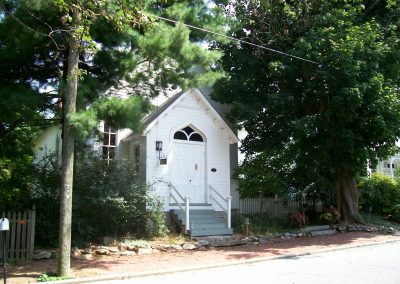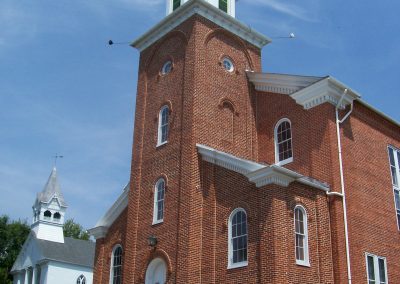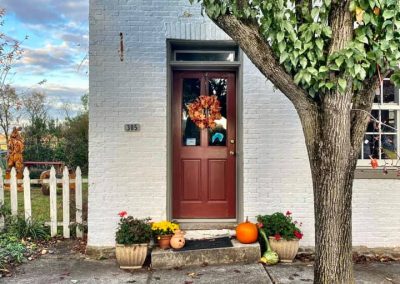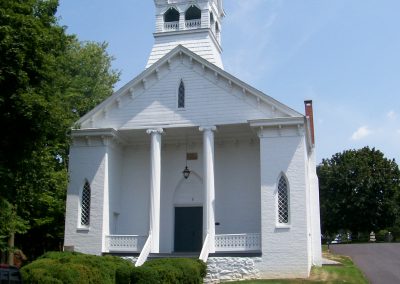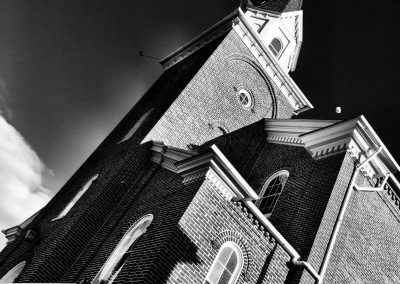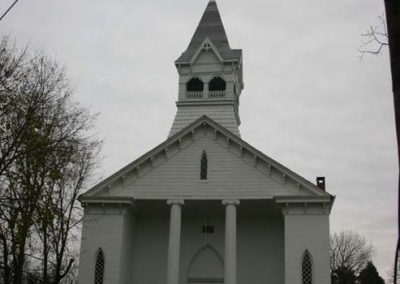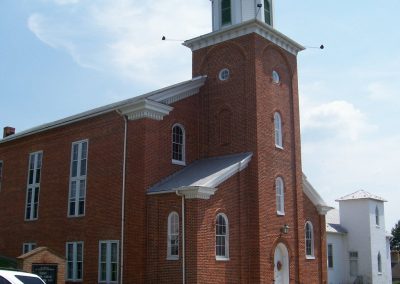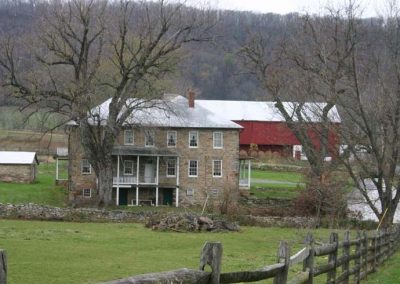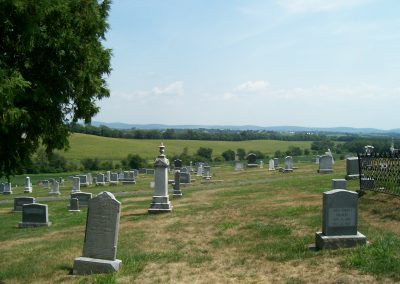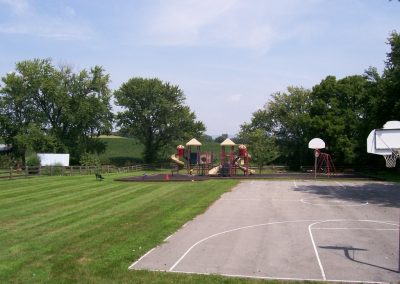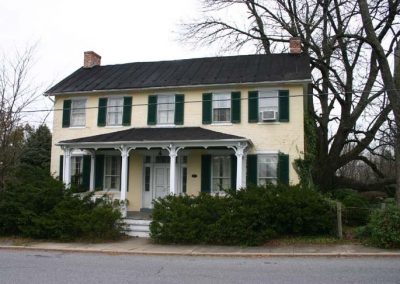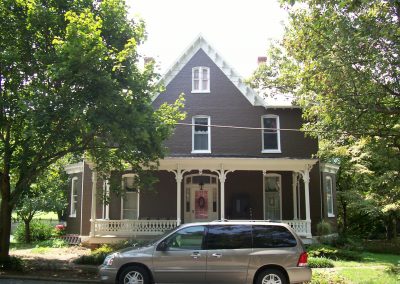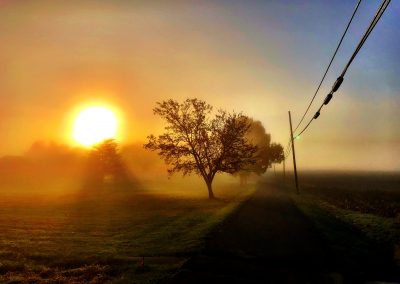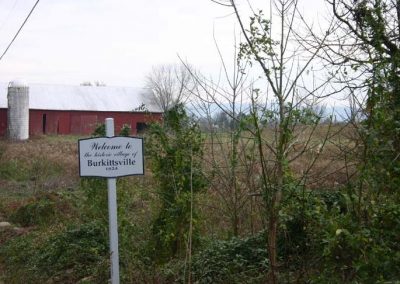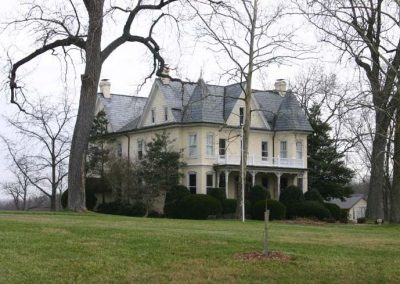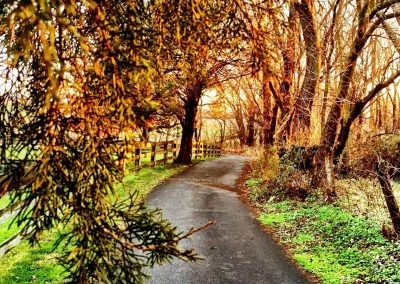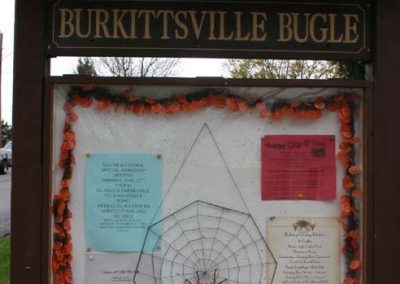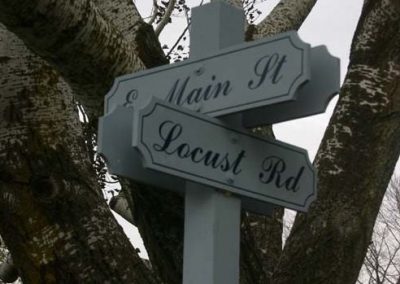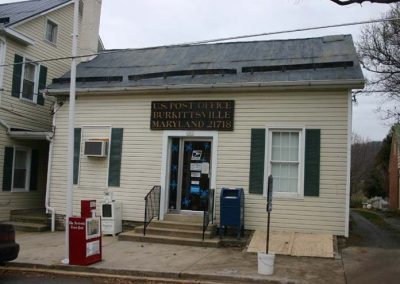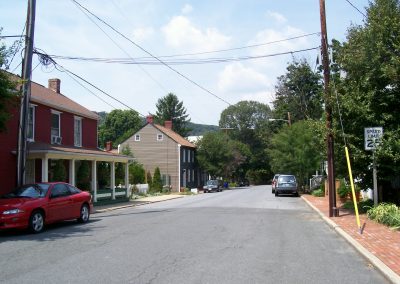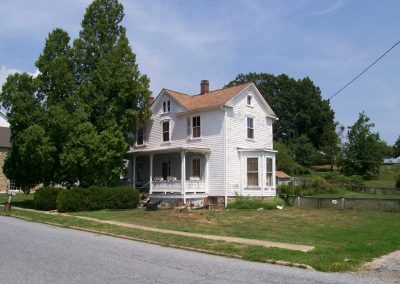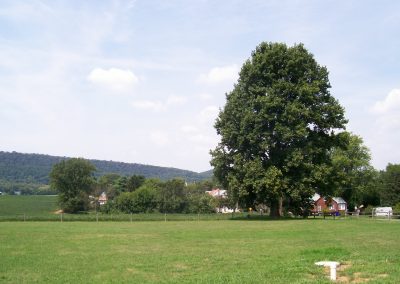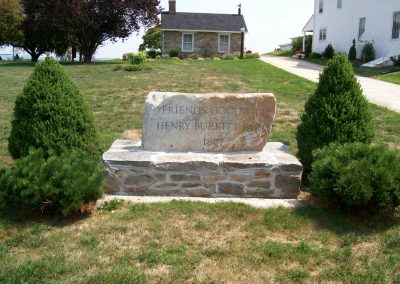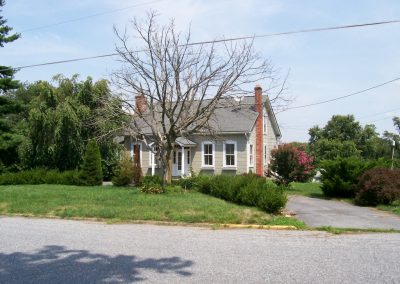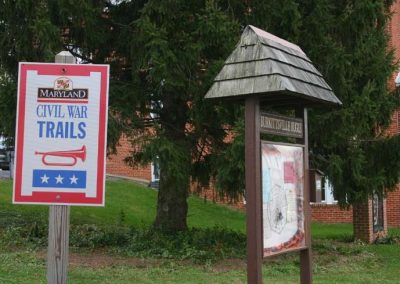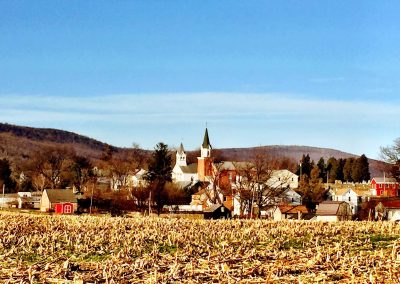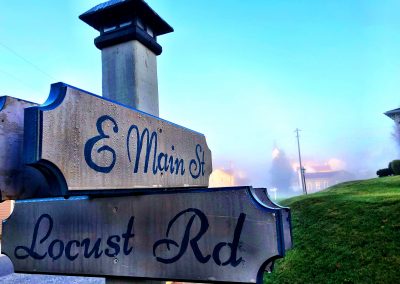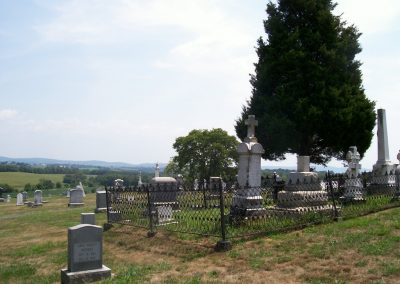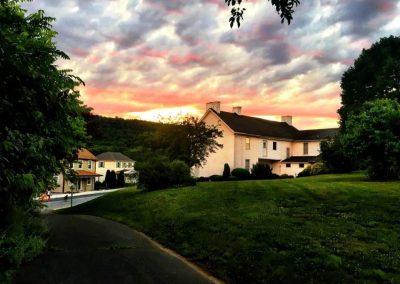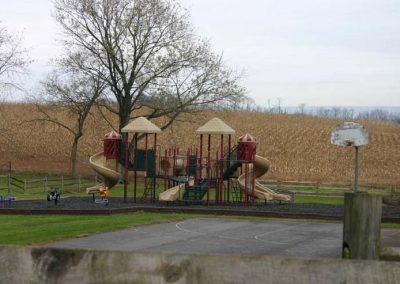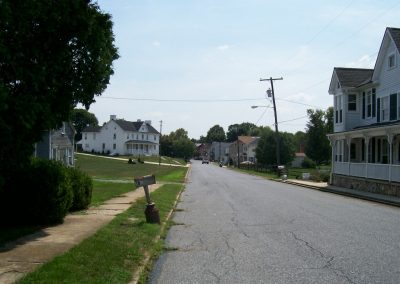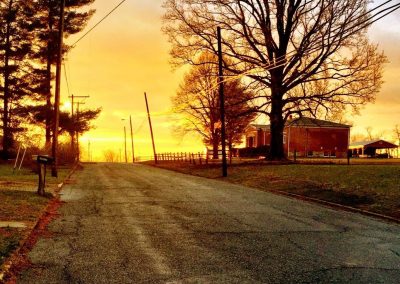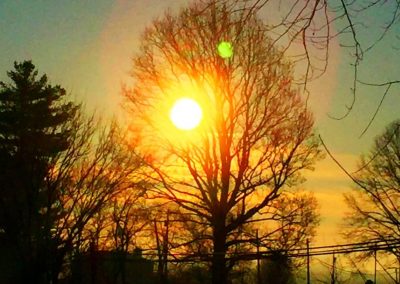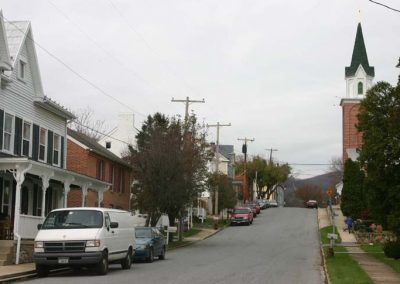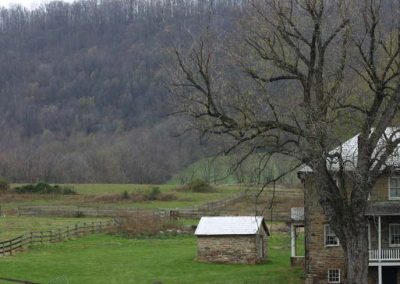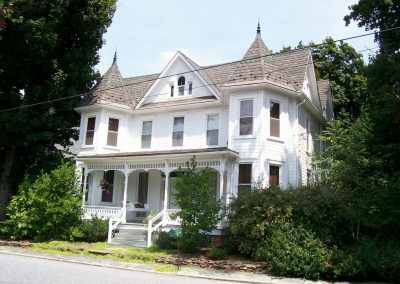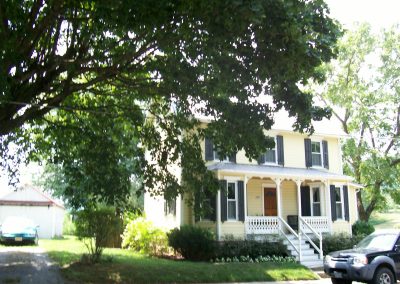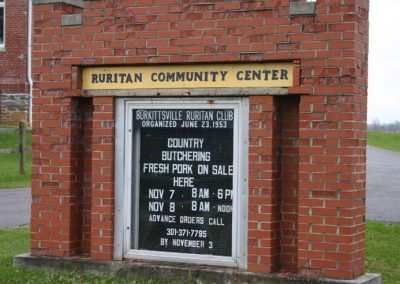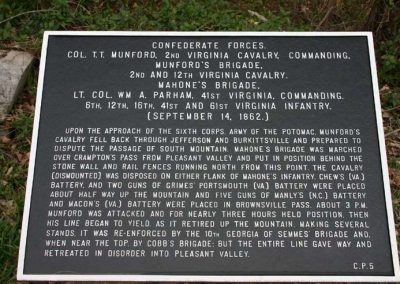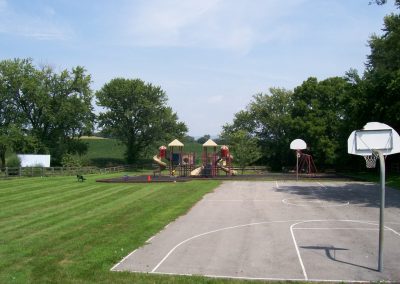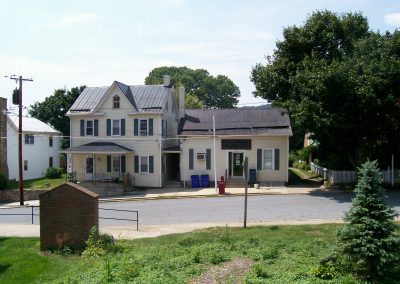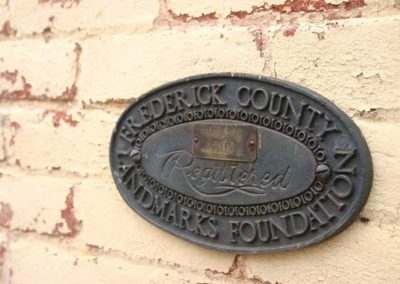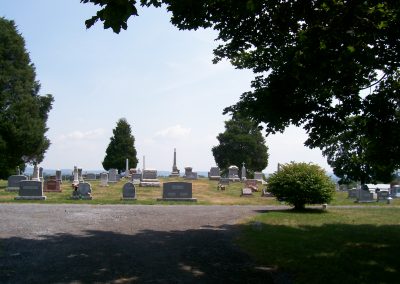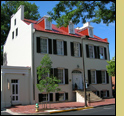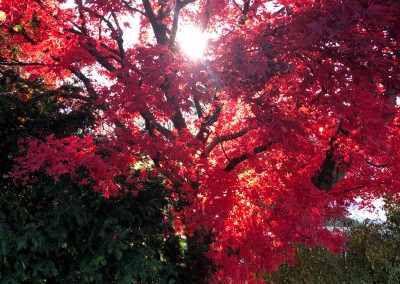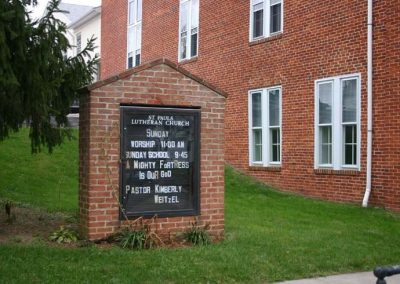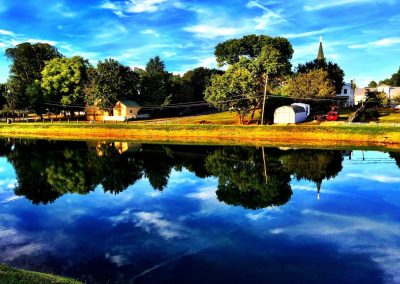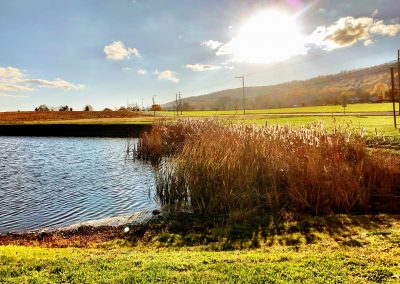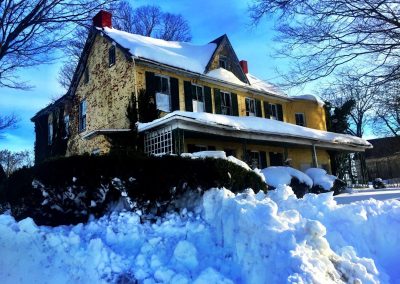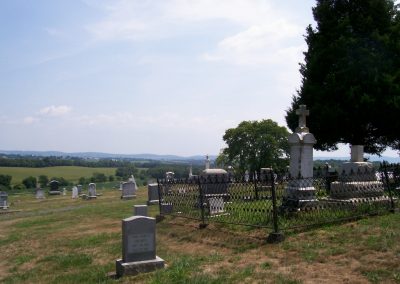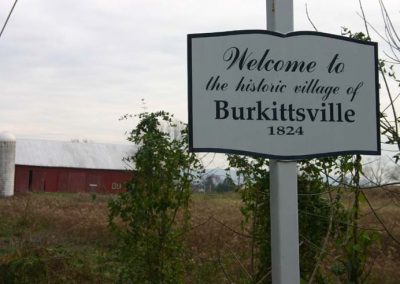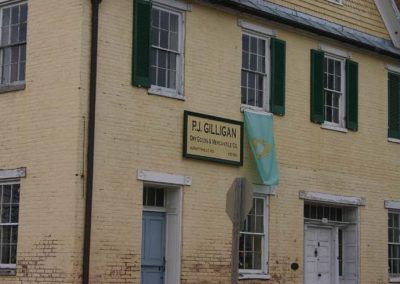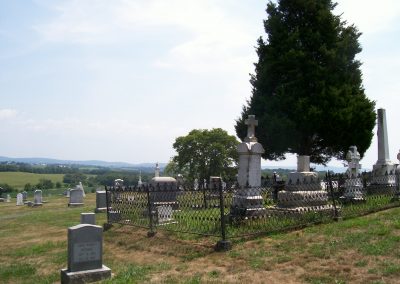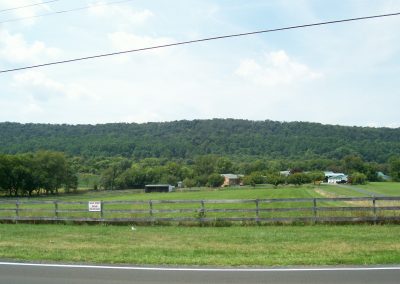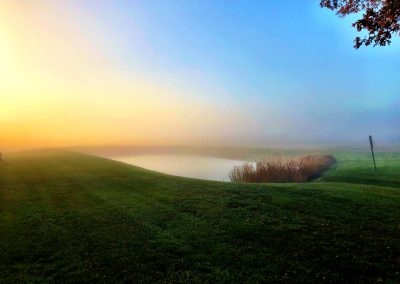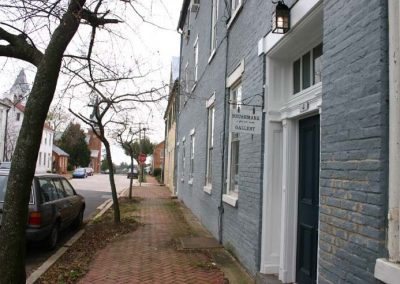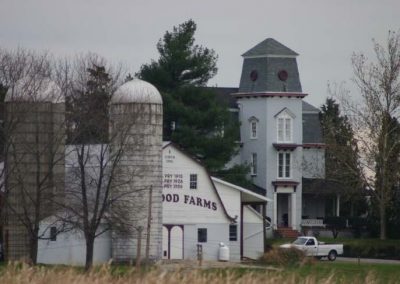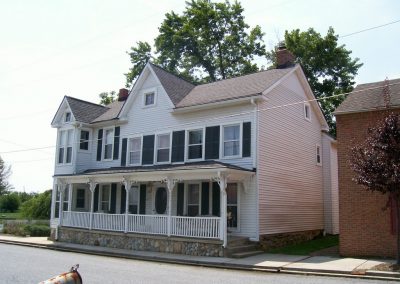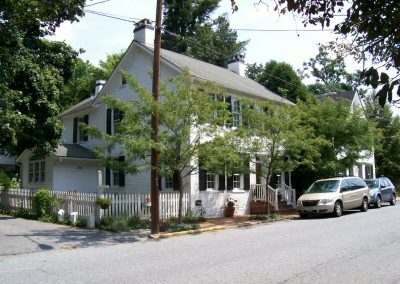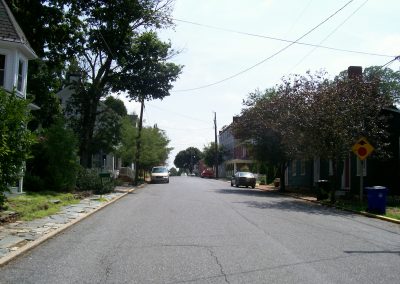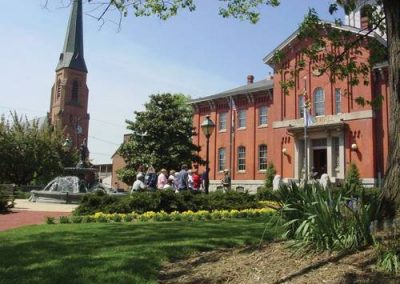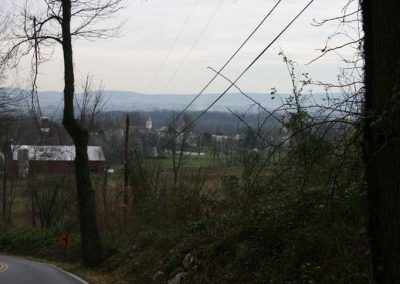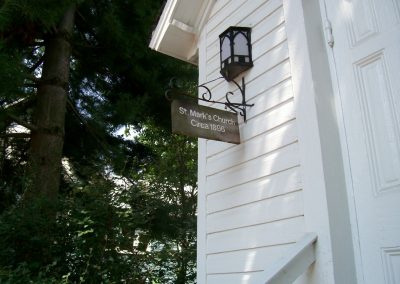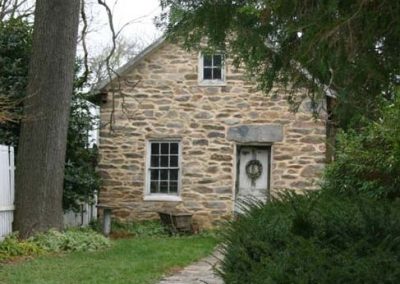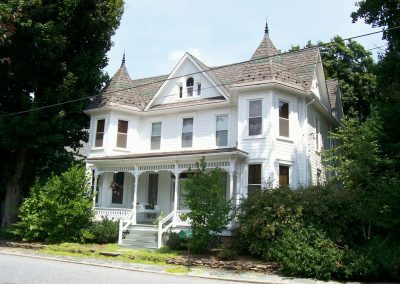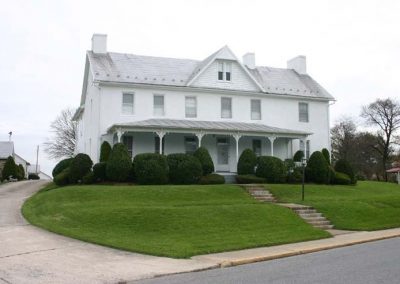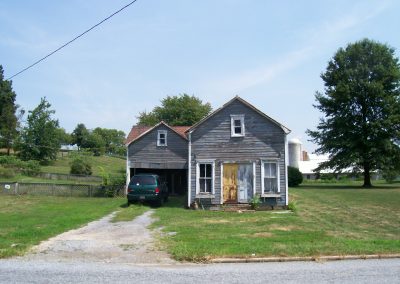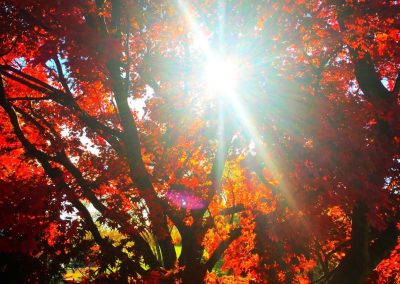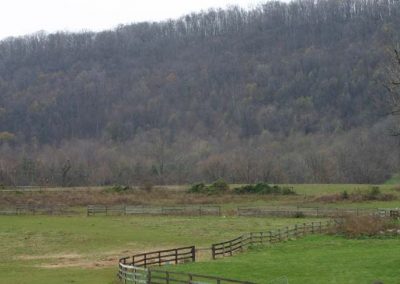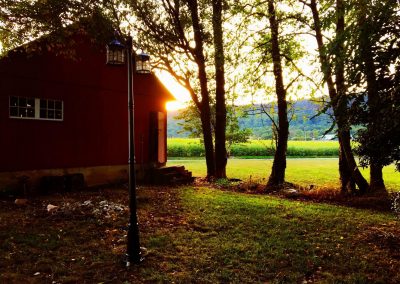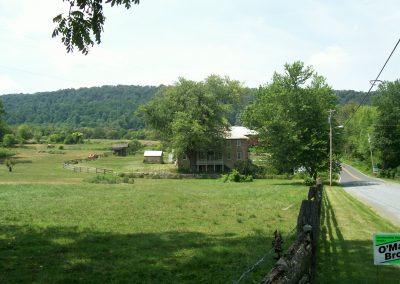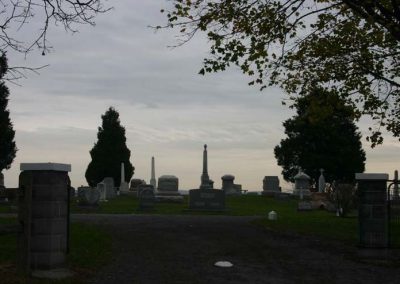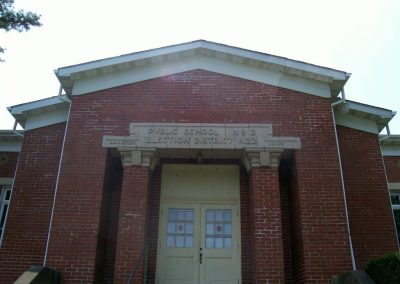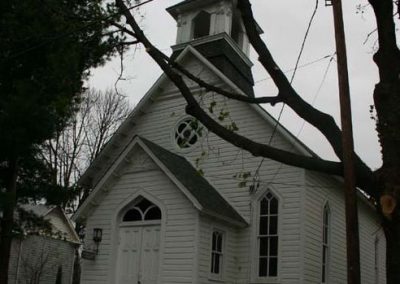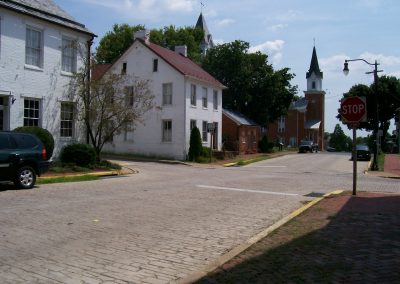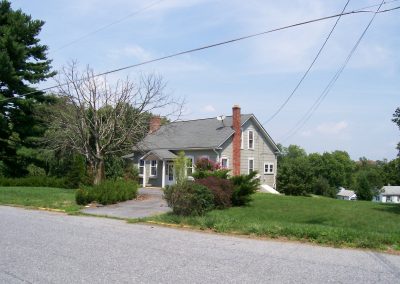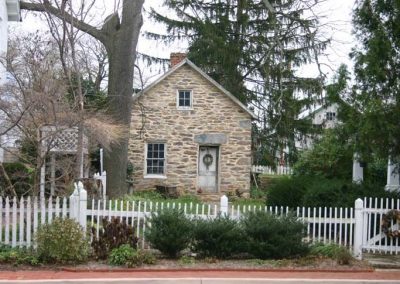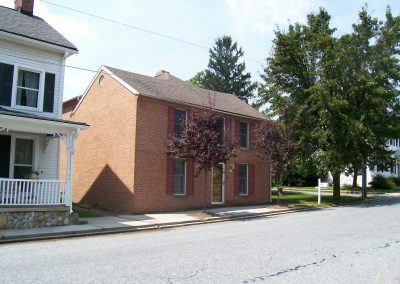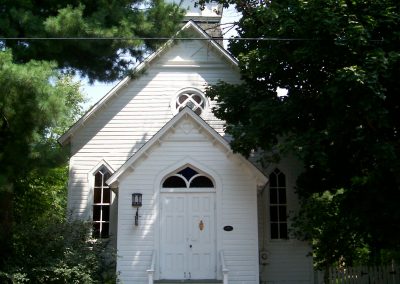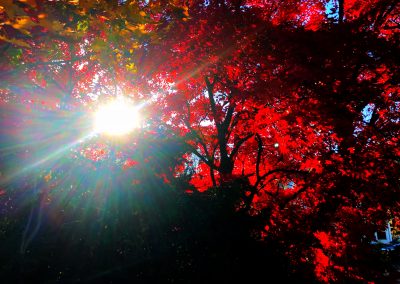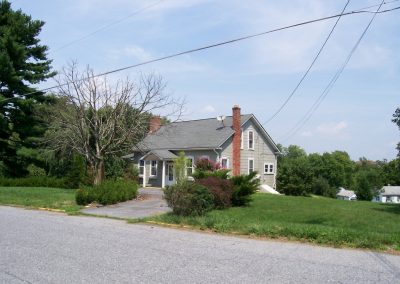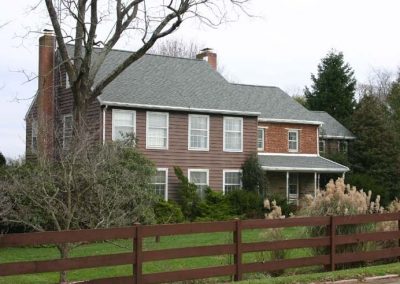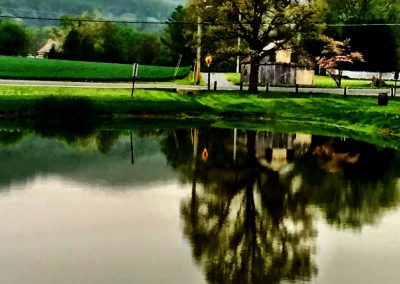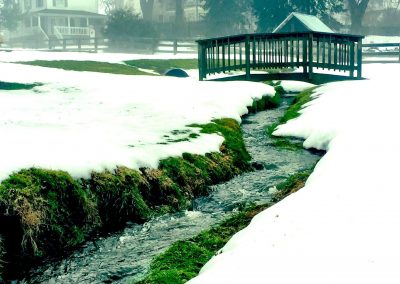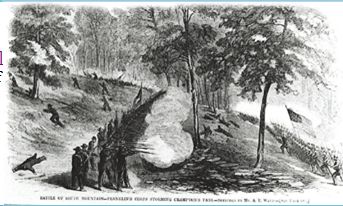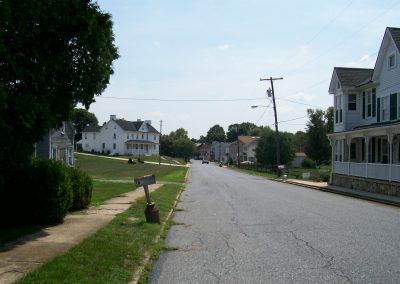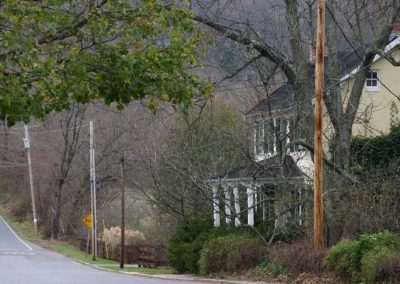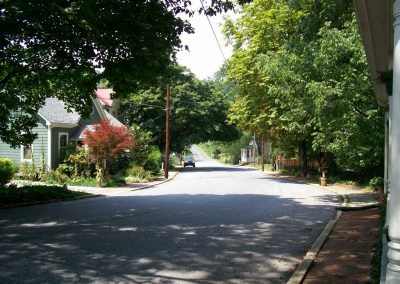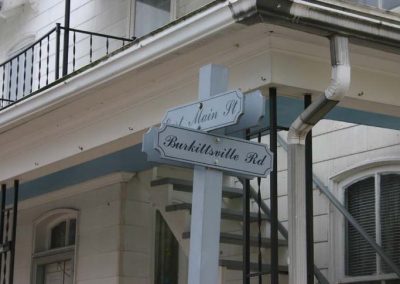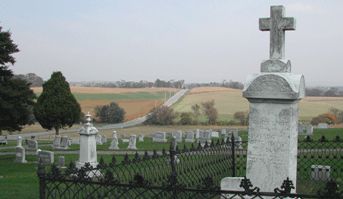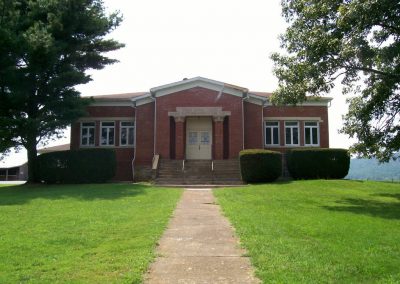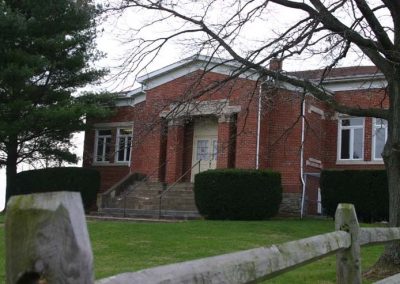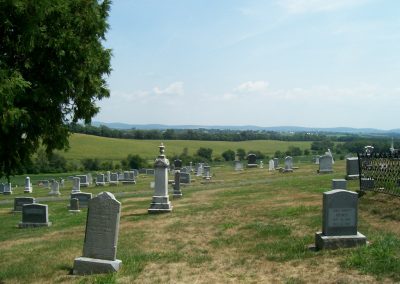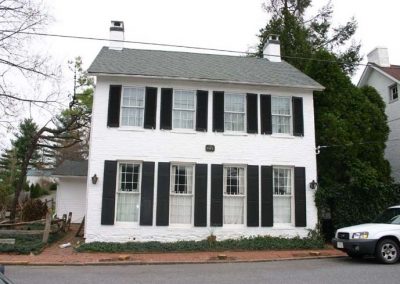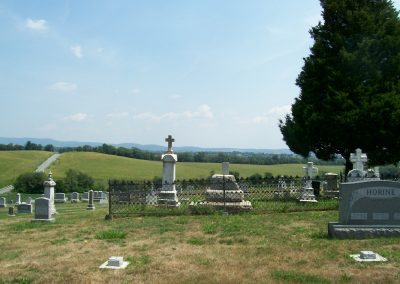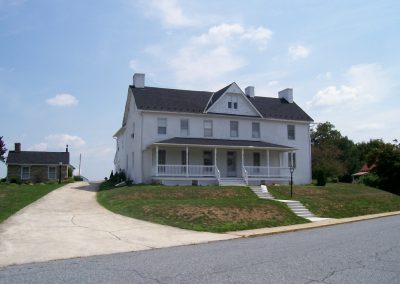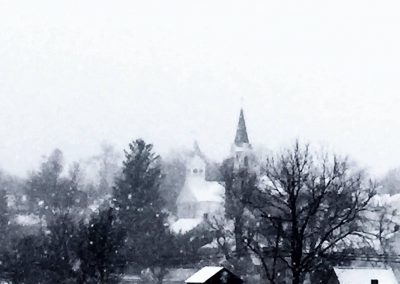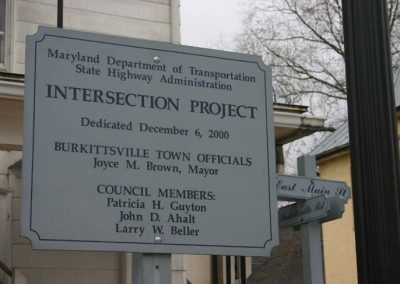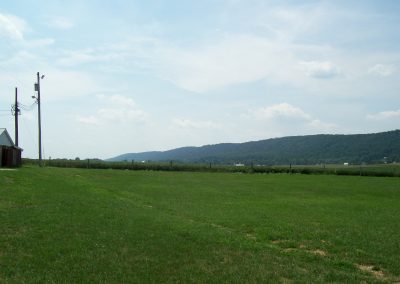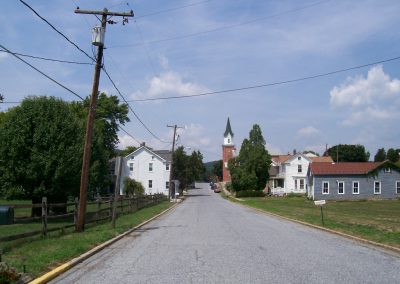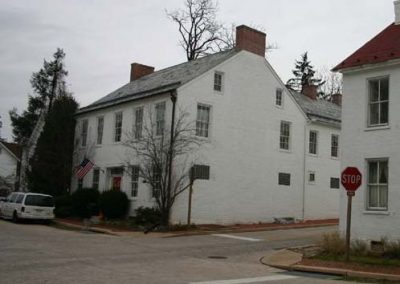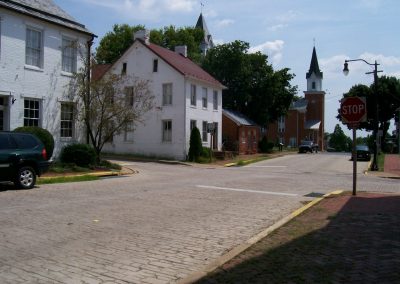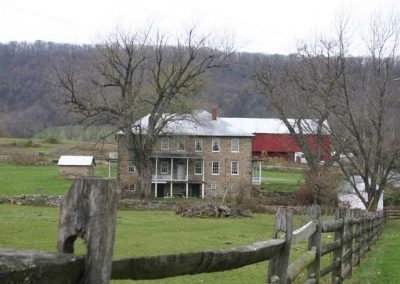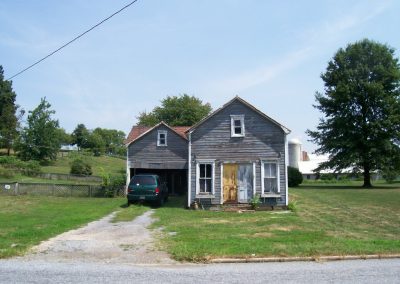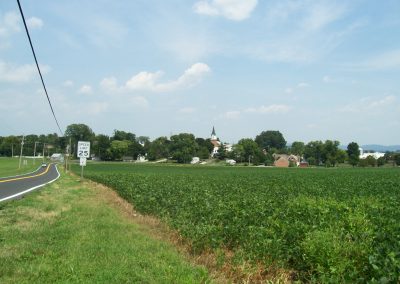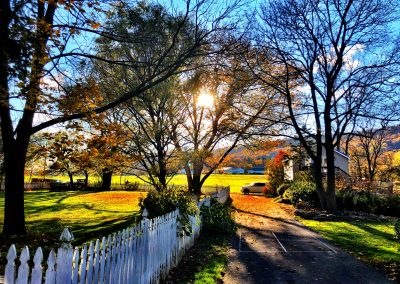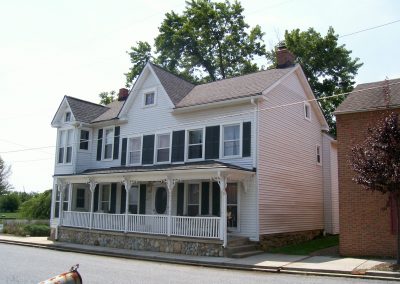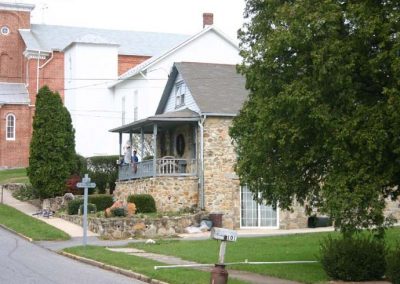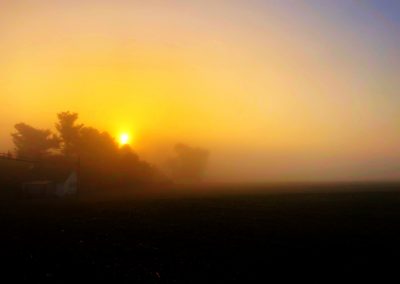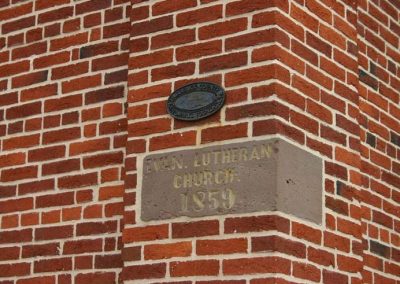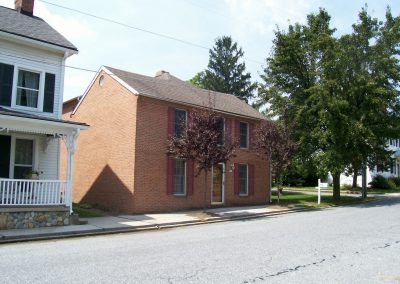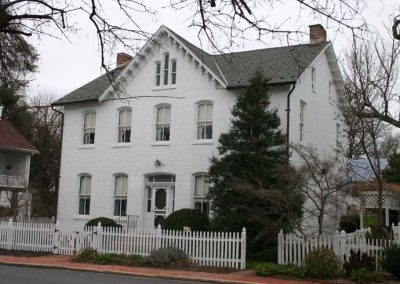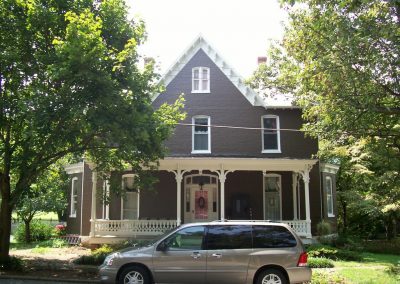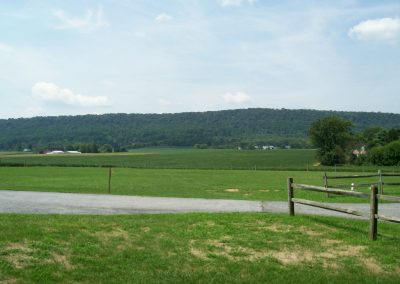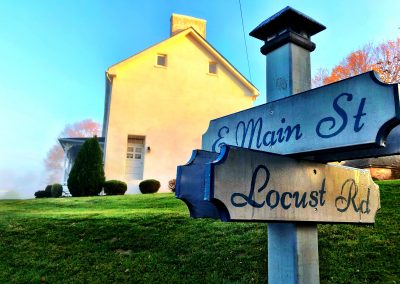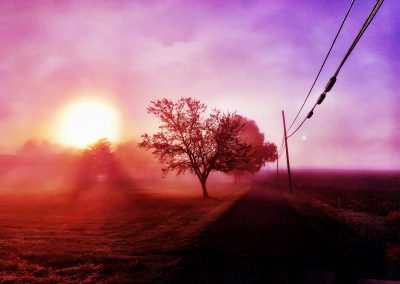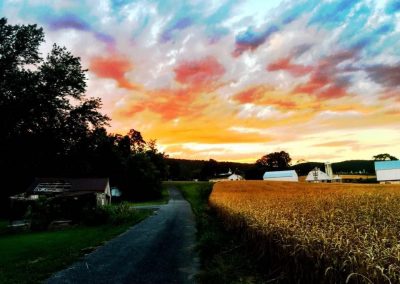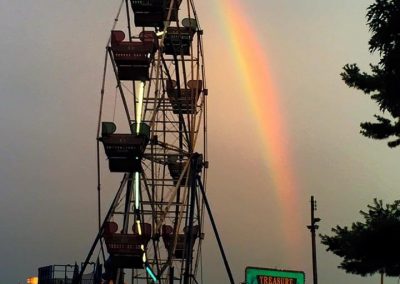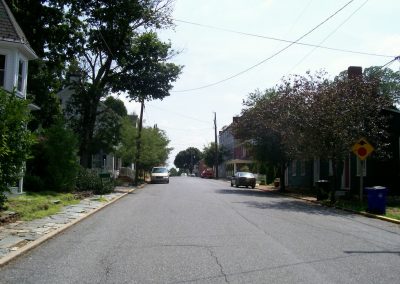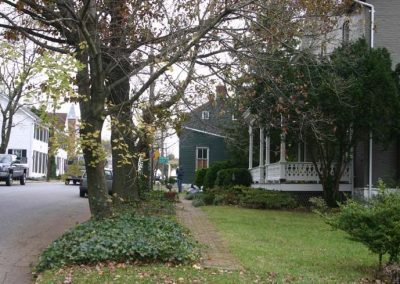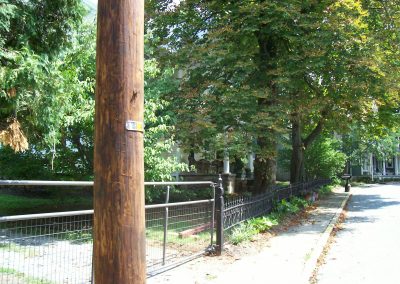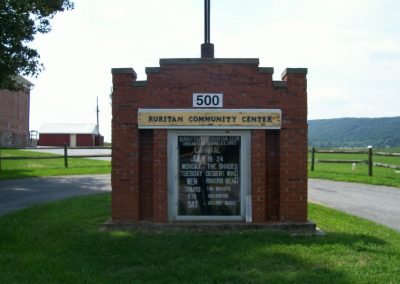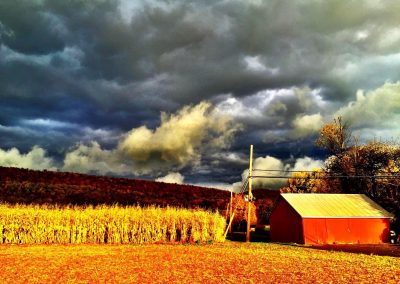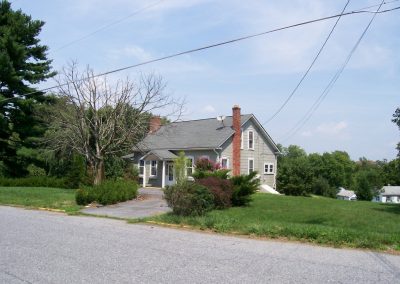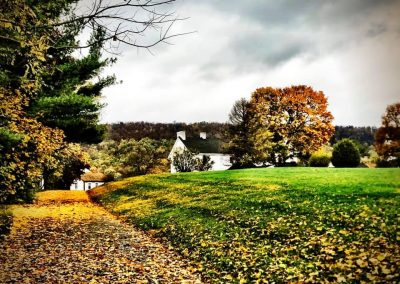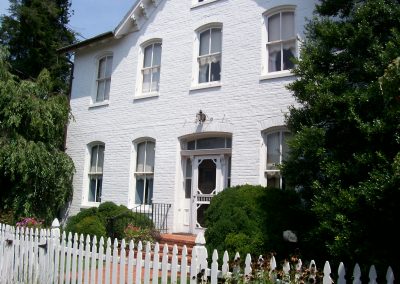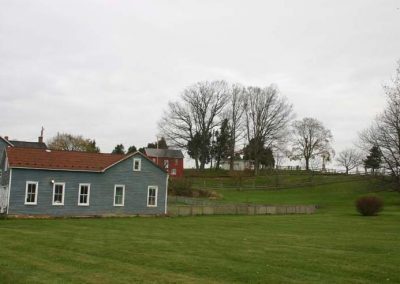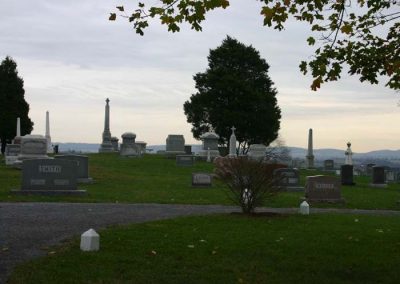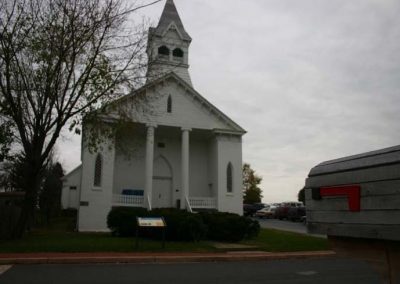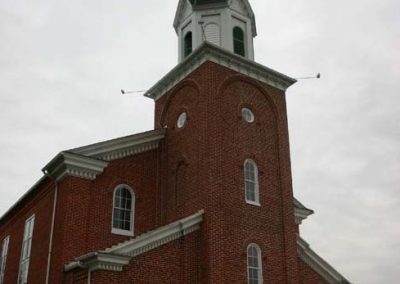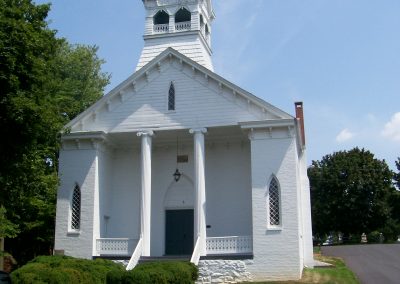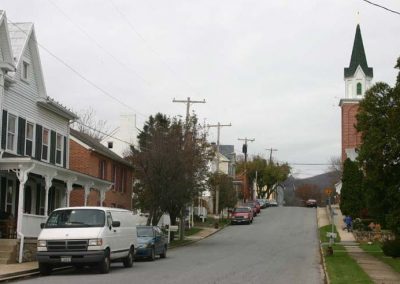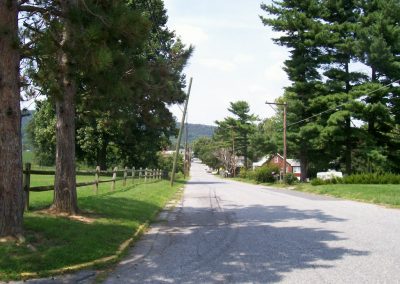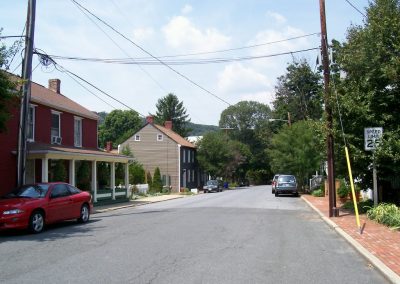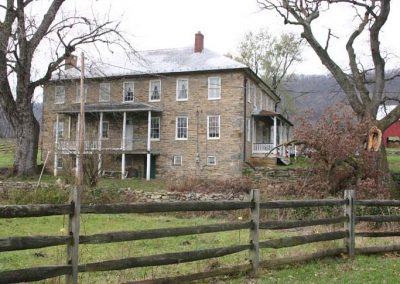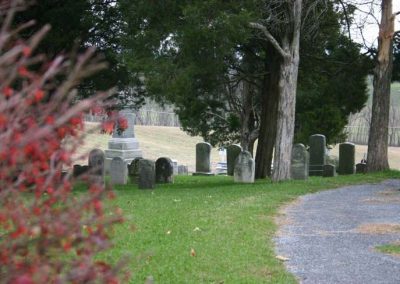Visit
Burkittsville
Walking Tour of Town
Often described as a time capsule of the 19th century, the agricultural village of Burkittsville became the focus of a pivotal battle of the War Between the States in the late summer of 1862. Hidden away in its remote corner of the Catoctin Valley, it can be said that the town´s role in this engagement largely placed it on the map, an obscure site made famous by the event of national upheaval.
Nearly 30,000 Union and Confederate troops passed through town during the 1862 Maryland Campaign and another 100,000 during the campaigns of 1863 and 1864, marching to and from Crampton´s Gap in South Mountain. During the Battle for CramptonÁs Gap, its houses were shelled, used for cover, and were finally converted to field hospitals by surgeons of the victorious Union Sixth Army Corps. Most of its wartime homes are still standing.
Structures listed are well-documented examples of the battle´s impact, each a tale of endurance under extreme adversity. All are situated along Main Street.These structures appear much today as they did in 1862, offering a virtually untouched wartime townscape and adjoining farm fields.
Main Street was used as a battle conduit by the entire Second Division, SixthCorps brigades of W.T.H. Brooks, W.S. Hancock and W.H. Irwin.
Please respect each homeowner’s privacy.
Copies of the complete Civil War Walking Tour brochure are available at the town bulletin board “The Bugle,” on East Main Street, directly across from the U.S. Post Office.
Tour Map
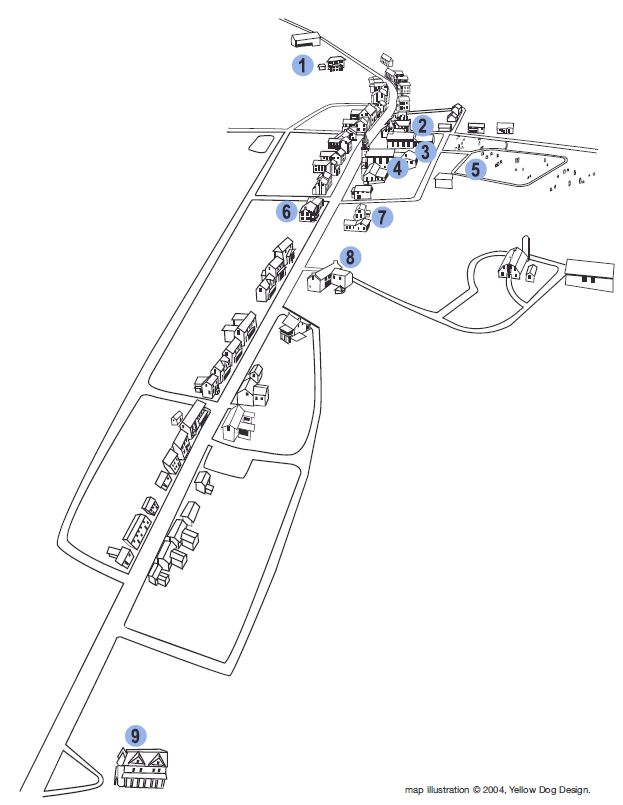
David Arnold House & Farm
David Arnold´s ″Gaver´s Recovery″ farm dominates the west entrance to town. The original portion of the house was built in 1798. A substantial two-story addition was built in 1873. Arnold´s property was used to deploy Gen. William T.H. Brook´s Vermont Brigade. They charged the Confederate battle line through the field beyond. At the same time Arnold´s northern fields were the scene of a charge by the First New Jersey Brigade of Col. Alfred T.A. Torbert.
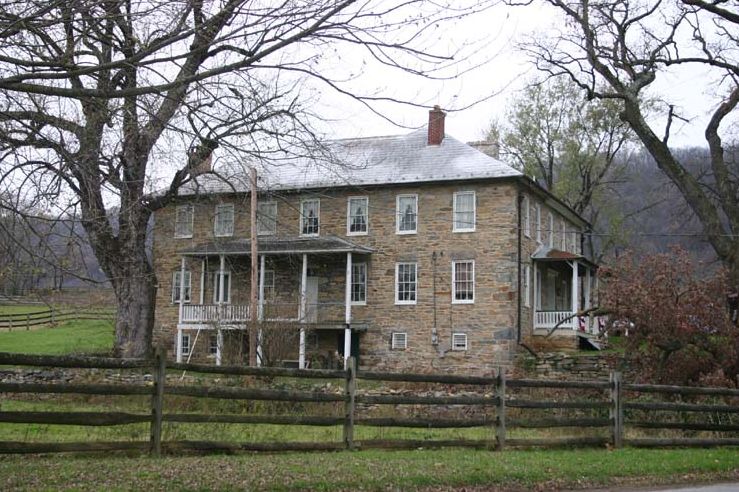

Resurrection German Reformed Church (1829-30)
It served as Sixth Corps Hospital “D” until January 1863. Mostly Union wounded were treated here filling the church to capacity. Confederate wounded were laid out overnight in the front yard, many of whom were moved the next day to homes of local Southern sympathizers.
German Reformed Parsonage
This three-story frame building of unknown date most likely served as Hospital“C”, taking the patient overflow from the Reformed Church, though records do not exist. It may have furnished more private quarters for treatment of wounded officers. The parsonage was torn down in the 1960s to make way for the parking lot situated between the churches.
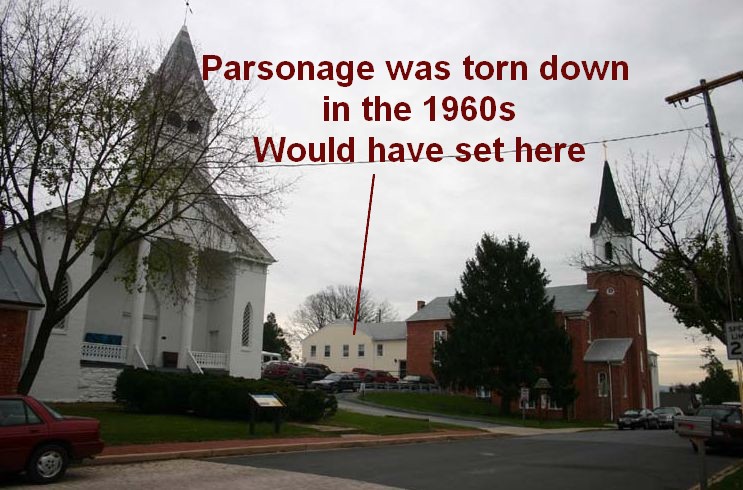

St. Paul´s Evangelical Lutheran Church (1859)
Saint Paul´s steeple was a town landmark mentioned by soldiers after the battle. This church too was given over to the treatment of Federal wounded, probably as Hosptial “B”. Adjacent to the church on its east side stands the Burkittsville School, now Saint Paul´s dining hall.
Union Cemetery
Henry Burkitt, the town namesake, donated the land for this burial ground in 1831. The name derives from joint use by Reformed and Lutheran congregations. Confederate patients treated in the two churches who died of wounds were temporarily buried here, in the older section nearest Middletown Road (Md. Rt. 17) immediately behind the Reformed Church. They were removed in 1868. From the cemetery’s summit one has an excellent view of the upper Catoctin Valley and Burkitt’s Ravine through which troops of the First Div. Sixth Corps, advanced undetected toward the mountains.


Dr. John E. Garrott House
Both home and office to Doctor Garrott, this house undoubtedly sheltered many wounded. Dr. Geo. Stevens, 77th New York Inf., assisted Dr. Garrott at the church next door where they found the surgeons had gone to bed leaving a sea of wounded Federal soldiers. the two labored far into early Monday morning to stabilize the wounded.
Dr. Tilghman Biser House
There is no evidence that Doctor Biser assisted army surgeons. Living with him was his nephew, Lewis Lamar who was reading medicine with Dr. Biser in preparation for medical school. Lewis was a distant cousin to tow high-ranking Confederate officers that were mortally wounded at Crampton’s Gap, Col. John B.Lamar (aide to Gen. Howell Cobb) and Lt. Col. Jefferson M. Lamar (commanding the Cobb Legion). Lewis Lamar was apparently unaware of the two cousins death that occurred so near to his residence.


Dr. John D. Garrott House
(Original Burkitt House)
There is no evidence that Doctor Biser assisted army surgeons. Living with him was his nephew, Lewis Lamar who was reading medicine with Dr. Biser in preparation for medical school. Lewis was a distant cousin to tow high-ranking Confederate officers that were mortally wounded at Crampton’s Gap, Col. John B.Lamar (aide to Gen. Howell Cobb) and Lt. Col. Jefferson M. Lamar (commanding the Cobb Legion). Lewis Lamar was apparently unaware of the two cousins death that occurred so near to his residence.
Otho F. Harley House
(Built circa 1849)
This was home to the grandson of town founder Joshua Harley. In 1824 the town was known as “Harley’s Store” or “Harley’s Post Office”. It changed to Burkittsville after Harley’s death in 1828. Otho Harley’s residence marks the battles start when officers of the 96th Pennsylvania, while under shell fire from Brownsville Pass, summoned Harley from hiding to learn where the Rebel battle line was located. The 96th took position on Distillery Lane opposite the house.
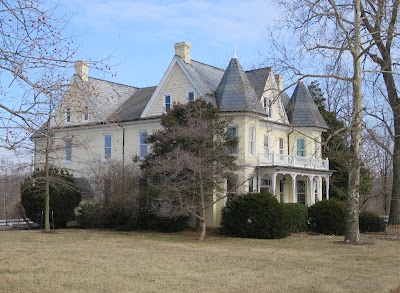
Points of Interest
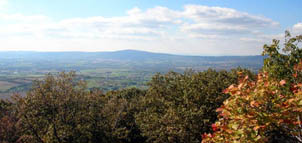
South Mountain State Battlefield Park
Civil War battles took place at Cramptons, Foxs & Turners Gaps on Sept. 14, 1862. The friends of South Mountain State Battlefield work to promote and preserve the battlefield. Currently two civil war museums are being developed. There are occasional civil war re-enactments, and educational outreach. 1 mile from Burkittsville.
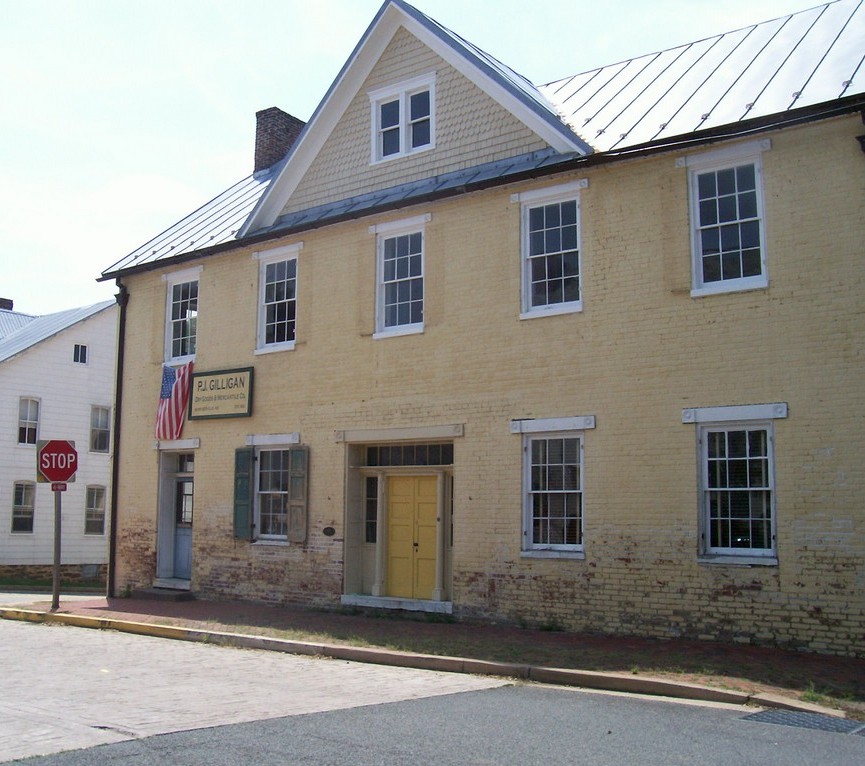
P. J. Gilligan Dry Goods
2 West Main Street in Burkittsville, MD
This historic shop has passed through the hands of a few owners through the ages and is still an active business. When you visit, you will see it much as people would have seen it 150 years ago. Carrying locally made handicrafts, ranging from soaps, candles, bags and balms to brooms, bowls, BBQ spices and sauces; the store is a great weekend destination for those who are interested in antiques as well. To learn more about the specialties of this shop in the heart of town, visit the website or drop in on weekends. Open Sat. 11 a.m. to 7 p.m. and Sun. Noon to 7 p.m.
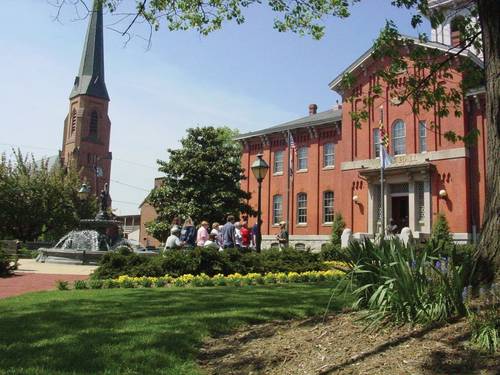
Historical Society of Frederick County
The Historical Society of Frederick County, founded in 1892, is one of the oldest county history organizations in the state of Maryland. The Societys museum and library, located at 24 East Church Street in Frederick collects, preserves, and interprets the history of Frederick County. Open 7 days a week, the museum is a must see, offering guided tours that will teach you about the history of the county from its founding in 1748 to the present. The research library is open Tuesday through Saturday and offers a wide array of historical and genealogical resources as well as a large photograph collection.
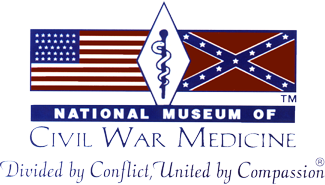
Civil War Museum of Medicine
Frederick, Maryland
An interesting collection of Civil War medical tools and techniques. Shopping & restaurants in old town Frederick. Exhibits, educational tours, special events, membership, annual conference, and museum store.30 minutes from Burkittsville.
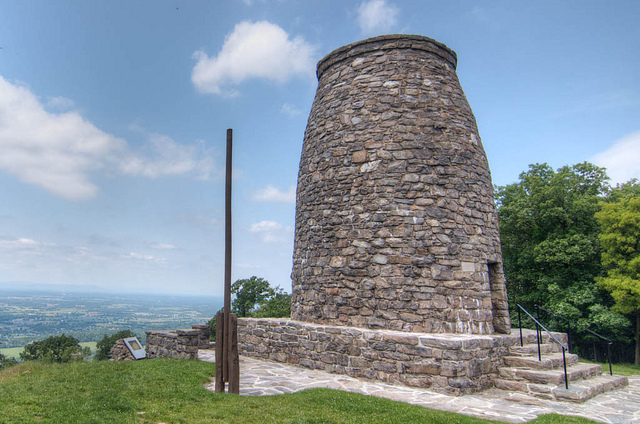
Washington Monument State Park
This State Park on South Mountain is named for the first monument dedicated to the memory of George Washington, which was completed in 1827 by the citizens of Boonsboro, MD. In 2015 the rough stone tower was damaged by lightning, check the provided link for the latest news on its condition and check out the available surrounding park areas. The Washington Monument State Park is a Maryland Green Travel Partner; it uses various sustainable environmental practices throughout the park.

Douglas G Bast Museum
of History and Preservation, Inc.
The Douglas G Bast Museum of History and Preservation, Inc. is often called “One of the best little museums in America” and “a miniature Smithsonian”. The museum houses a vast and unique collection of historical objects of local and national importance. From ancient Egyptian artifacts to objects found on local Civil War battlefields, there is something for everyone at the Boonsborough Museum of History. Just a few of the things visitors will see include: a letter written by Clara Barton, a chair used in the Lincoln White House, a large collection of firearms from around the world, a one-of-a-kind collection of carved bullets from the Civil War, objects associated with local folklore and magic and beautiful antique glassware and pottery.
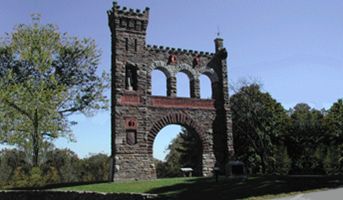
Gathland State Park
George Alfred Townsend, “Gath” was one of the youngest correspondents of the Civil War, who later became one of Americas most important journalists and novelists. “Gath” purchased 100 acres on South Mountain and erected a monument to honor Civil War Correspondents, artists and photographers. The site is now Gathland State Park. Located about a mile from Burkittsville,GATHs War Correspondents Arch is a National Historic Monument. It was constructed in 1896 and stands fifty feet high and forty feet broad. There is a picnic shelter and museum on the site and you can access the Appalachian Trail through the park.
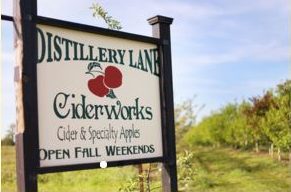
Distillery Lane Ciderworks
Distillery Lane Ciderworks sits on 95 acres in Jefferson, Maryland—just outside of the historic town of Burkittsville. The farm is a historic site, dating back to the Civil War, and is officially known as ″The Encampment″ as the farm was used as a camp for Union soldiers leading up to the battle of Antietam.
Opened for business as an official Maryland winery in 2010, Distillery Lane Ciderworks took its name from the rich history of the area. The whole valley was dotted with beer and whiskey-producing distilleries up until Prohibition. The remains of one of these distilleries can still be seen today down the road from the farm in the woods.
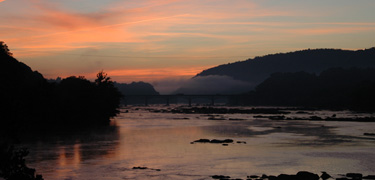
Harpers Ferry, West Virginia
This restored town changed hands many times during the Civil War. Its position on the Potomac and Shenandoah rivers was a critical factor. A railroad runs along the river and was instrumental in carrying supplies. This beautiful town has nearly been lost several times by flooding from the converging rivers. Shops, museums, programs. Campgrounds nearby. 22 milesfrom Burkittsville.
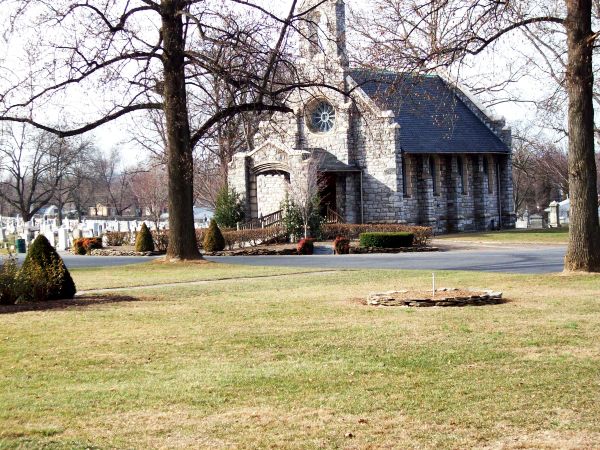
Mount Olivet Cemetery
Frederick, Maryland
Francis Scott Key grave and numerous Civil War graves. Shopping & restaurants in old town Frederick. 30 minutes from Burkittsville.

C & O Canal National Historic Park
This 185 mile canal towpath goes from Cumberland, MD to Washington, D.C. and was a super-highway in the 1800s. It now serves as a national park where bikers, hikers, and horseback riders take advantage of the scenic views and wide, flat trail. About 8 minutes from Burkittsville.

Brunswick Heritage Museum
The Brunswick Heritage Museum is located at 40 W. Potomac St., Brunswick, MD. It preserves the history of Brunswick, MD, and features changing exhibits on the second floor which tell the story of railroaders and their families in the 1900s, on the third floor there is a 1,700 square-foot HO scale model railroad that depicts the B&O Metropolitan Subdivision from the west end of the Brunswick rail yard through Montgomery county and all the way to Union Station in DC. This model has many interactive elements for visitors to enjoy. The Brunswick Heritage Museum is also home to The Brunswick Visitors Center for the National Park Service’s Chesapeake & Ohio National Historic Park.
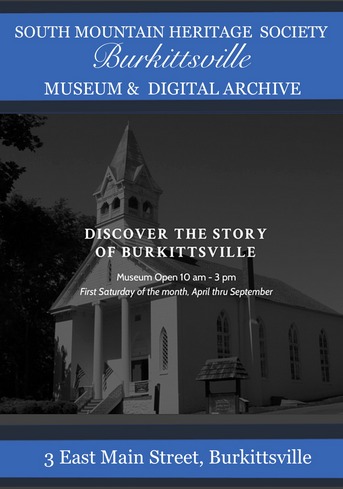
South Mountain Heritage Society
3 West Main Street in Burkittsville, MD
Preserving Burkittsville′s History
Open First Saturday of the Month
April – September 10:00-3:00
South Mountain Heritage Society is a non-profit organization dedicated to the preservation, interpretation, and exhibition of Burkittsville′s history. Our organization was created in the mid-1970s, and led in the restoration of our headquarters in 2000-2002.
The Heritage Society Headquarters and Museum are located in the historic Resurrection Reformed Church, built in 1829 as the “Union Church.” The structure was employed for use as a field hospital from September 14 – December of 1862 following the Battles of South Mountain and Antietam. Today, the church is restored to its 1896 appearance, a unique structure which blends Greek Revival, Gothic Revival, and Italianate Styles, reflecting the evolution of the structure throughout the 19th century.
Visitors to our museum can take a guided tour of the historic church, as well as explore our exhibit room, which is located in the 1894 wing at the back of the building. Exhibits focus on the commercial, industrial, and religious aspects of Burkittsville′s history, as well as the Civil War and the African American Community. In addition, we offer a small reference library and archive to researchers interested in the village′s history, as well as that of the surrounding area.
Throughout the year, we offer special programs, including concerts which take advantage of the wonderful acoustics of our historic church building. We also hold an annual used book sale which takes place each Saturday in October, and a Craft Sale, usually in November.
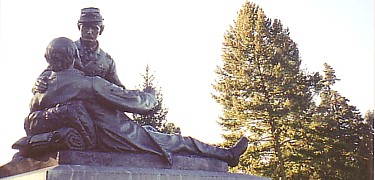
Historical Society of Frederick County

Appalachian Trail National Park
The scenic trail is a 2,167 mile footpath across the major valleys of the Appalachian Mountains from Maine to Georgia. Began by forestor Benton MacKaye and developed by volunteers, it was opened as a continuous trail in 1937 and more than 4000 volunteers contribute to the trail every year. You can access the trail in Gathland State Park, about a mile from Burkittsville.

Spook Hill Cider & Wine 4 Mile Run
The Spook Hill Cider and Wine 4 Mile Run is a nationally recognized event which occurs through Burkittsville annually in October. The run’s course includes a gentle incline at Spook Hill, a pleasant section of Boordy Winery’s Vineyard, a portion of the historic Union Cemetery, Guyton’s Farm and Distillery Lane Ciderworks’ famous orchard. This unique run/walk benefits the non-profit organization South Mountain Heritage Society.
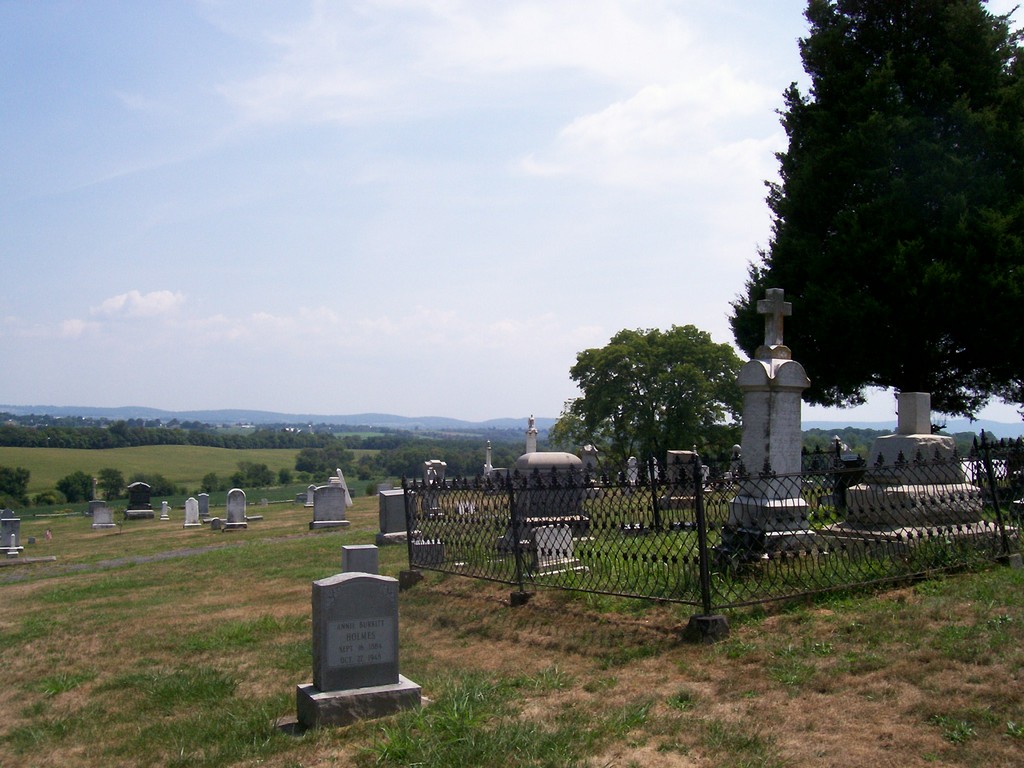
Union Cemetery
Henry Burkitt, the town namesake, donated the land for this burial ground in 1831. The name derives from joint use by Reformed and Lutheran congregations. Confederate patients treated in the two churches who died of wounds were temporarily buried here, in the older section nearest Middletown Road (Md. Rt. 17) immediately behind the Reformed Church. They were removed in 1868. From the cemetery’s summit one has an excellent view of the upper Catoctin Valley and Burkitt’s Ravine through which troops of the First Div. Sixth Corps, advanced undetected toward the mountains.

